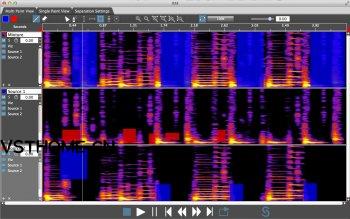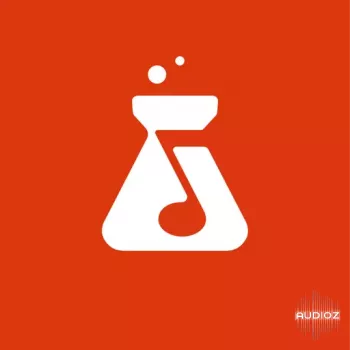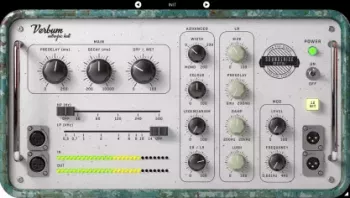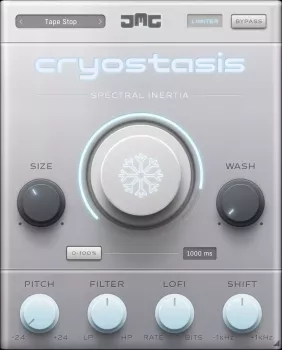Developer: Nicholas J. Bryan | Last Update: Version 0.2.0 | 8.74 MB
英文简介:
In applications such as audio denoising, music transcription, music remixing, and audio-based forensics, it is desirable to decompose a single- or stereo-channel recording into its respective sources. To perform such tasks, we present ISSE - an interactive source separation editor (pronounced "ice").
ISSE is an open-source, freely available, cross-platform audio editing tool that allows a user to perform source separation by painting on time-frequency visualizations of sound. The software leverages both a new user interaction paradigm and machine learning-based separation algorithm that "learns" from human feedback (e.g. painting annotations) to perform separation. For more information, please see the about and demos sections of the website and the demo video below.
History
ISSE was developed by Nicholas J. Bryan as part of his PhD thesis, advised by Gautham J. Mysore at Adobe Research and Prof. Ge Wang of the Music, Computing, and Design Group (MCD) at the Center for Computer Research in Music and Acoustics (CCRMA), Stanford University. In July 2013, it was released as an open-source project licensed by Adobe Research and Stanford University. Since then, several others have joined as advisors, collaborators, and developers.
Authors, Advisors, and Collaborators
Authors, advisors, and collaborators include:
Nicholas J. Bryan (inactive since 01/05/14),
Gautham J. Mysore, Adobe Research,
Ge Wang, Stanford University,
Paris Smaragdis, University of Illinois at Urbana-Champaign,
Bryan Pardo, Northwestern University.
In addition, the software is heavily dependent on several fantastic third-party open-source libraries including JUCE, Eigen, and FFTW.
Publications
Technically speaking, the core separation algorithm used within ISSE is a machine learning separation method based on non-negative matrix factorization and related probabilistic methods. Over the past decade these methods have been found to be useful for a wide variety of music and audio-related tasks including source separation. For a list of relevant prior work, please see this link. For the specific technical contributions of this work compared to past research, please see the list below.
An extended abstract and introduction to the work related to the subject of interactive machine learning.
N. J. Bryan, G. J. Mysore. "Interactive User-Feedback for Sound Source Separation." International Conference on Intelligent User-Interfaces, Workshop on Interative Machine Learning (Extended Abstract/Workshop Paper), Santa Monica, CA. March 2013. (abstract)
The core separation algorithm and technical material.
N. J. Bryan, G. J. Mysore. "An Efficient Posterior Regularized Latent Variable Model for Interactive Sound Source Separation." International Conference on Machine Learning, Atlanta, GA. June 2013. (web, paper)
An extension to the core separation algorithm with additional interpretation.
N. J. Bryan, G. J. Mysore. "Interactive Refinement of Supervised and Semi-Supervised Sound Source Separation Estimates." IEEE International Conference on Acoustics, Speech, and Signal Processing, Vancouver, Canada. May 2013. (web, paper)
Upcoming PhD thesis.
N. J. Bryan. "Interactive Sound Source Separation." PhD Thesis, Stanford University. (web)
version: 0.2.0 (alpha-release)
What's New: Stereo processing, interface updates, bug fixes.Avaiable for both Windows & Mac systems.
Note
Special thanks to Nicholas J. Bryan for developing this wonderful software, and thanks to the Collaborators for supporting this whole project.
Enjoy!
官网: http://isse.sourceforge.net/index.html







评论0